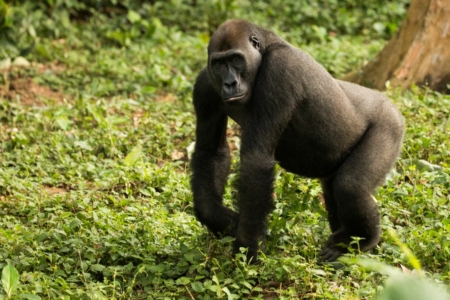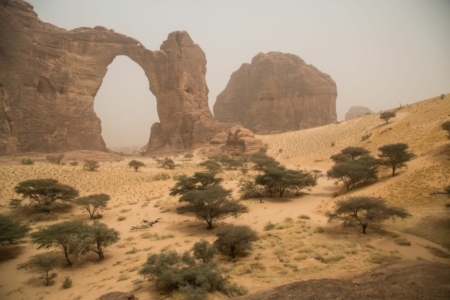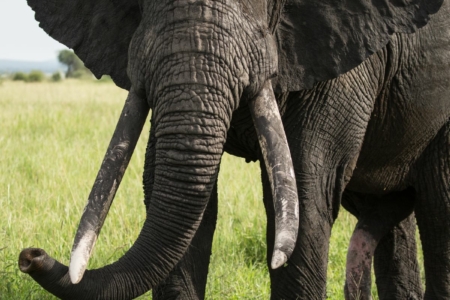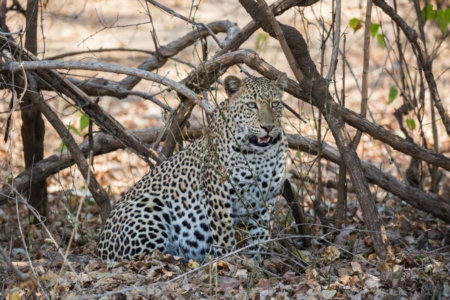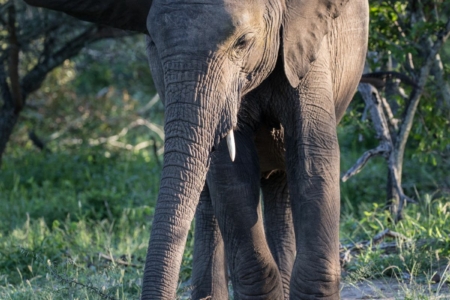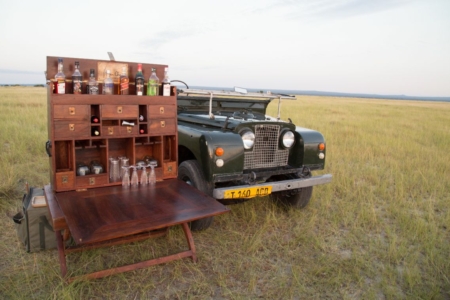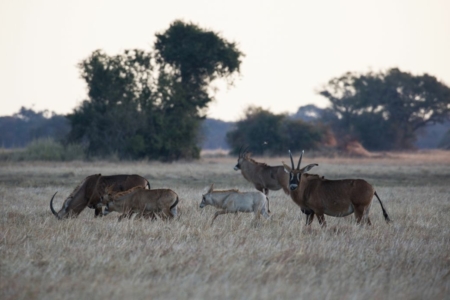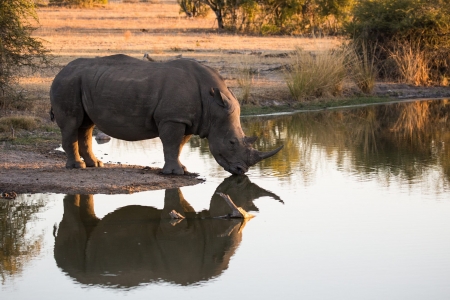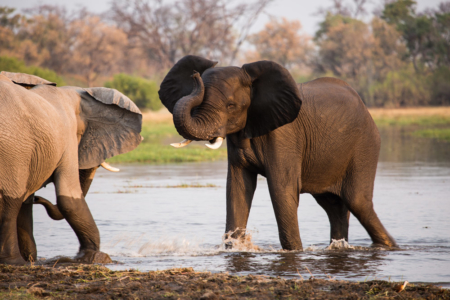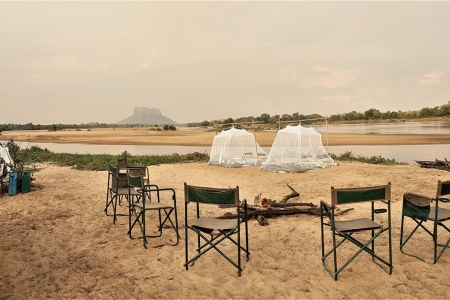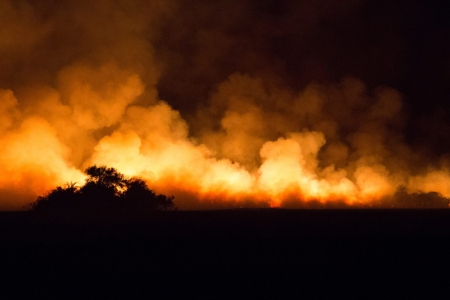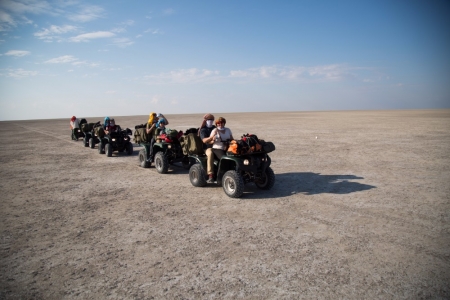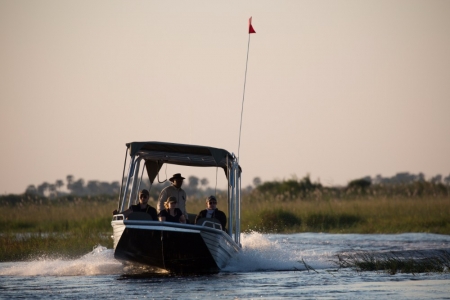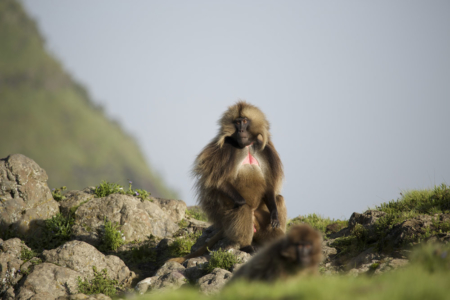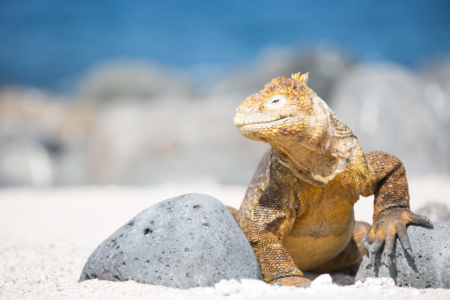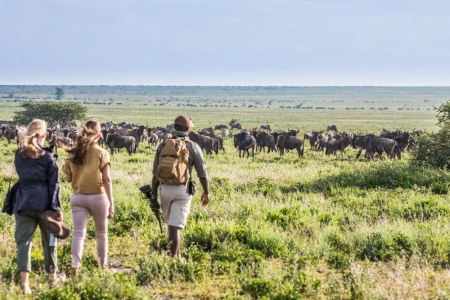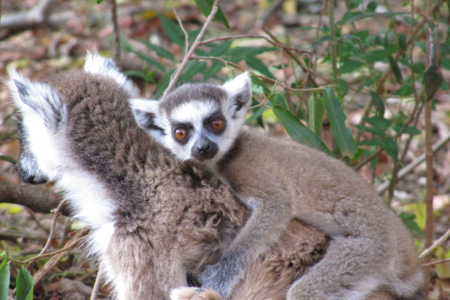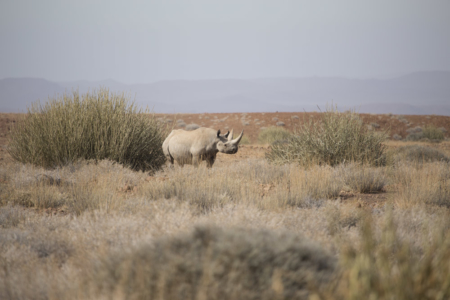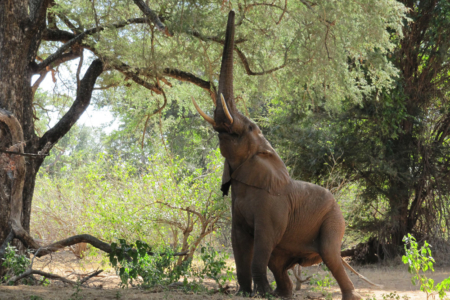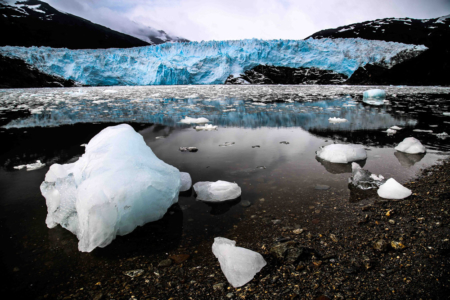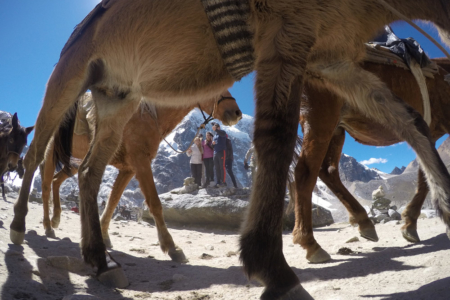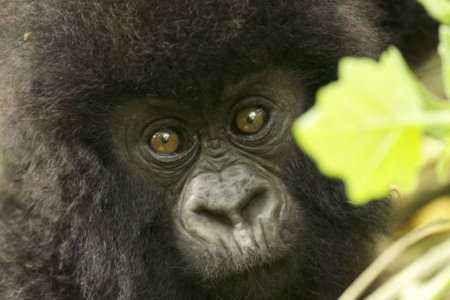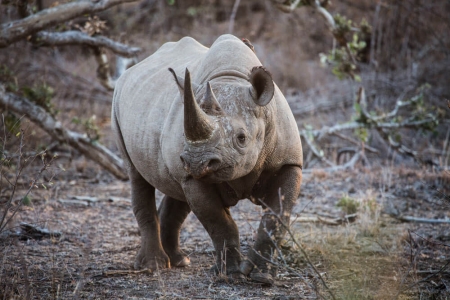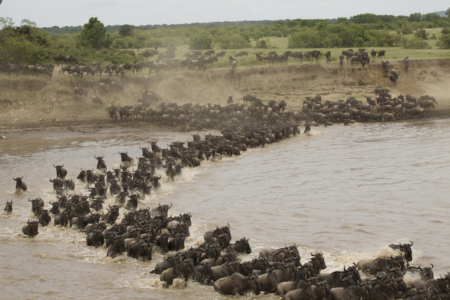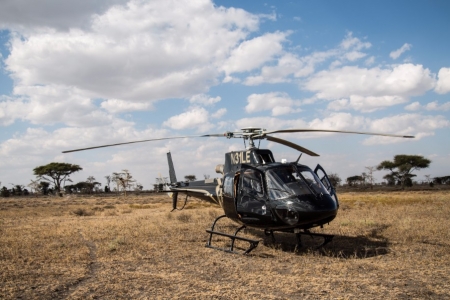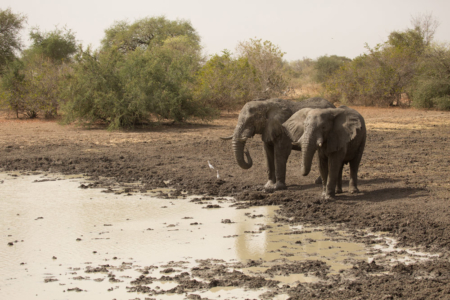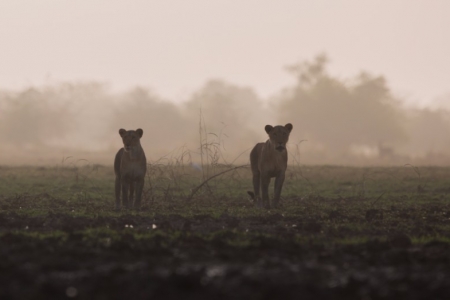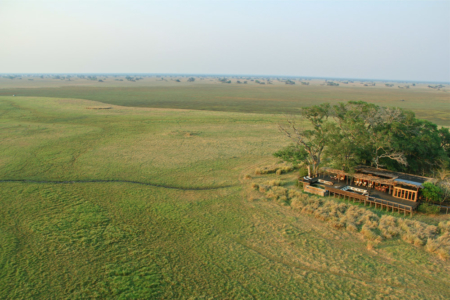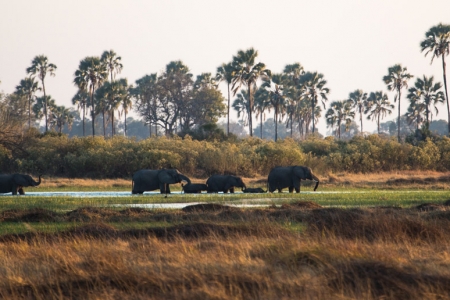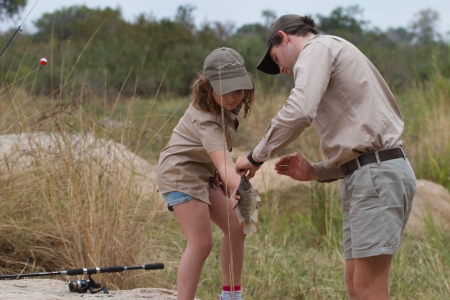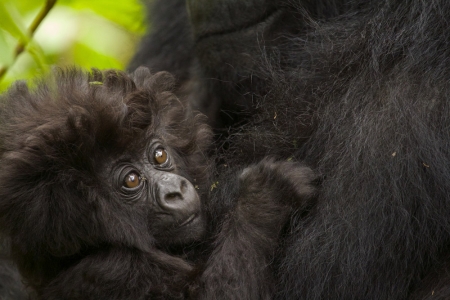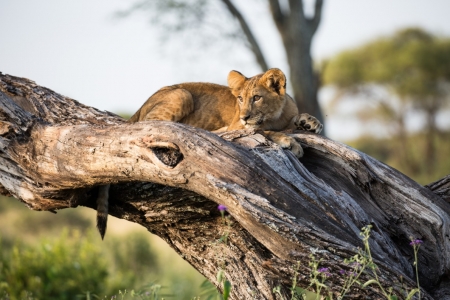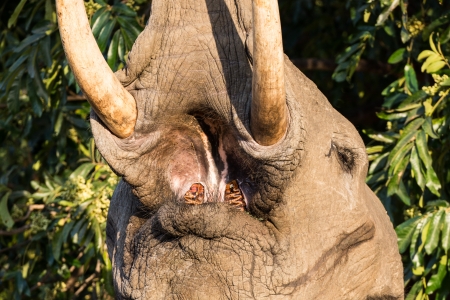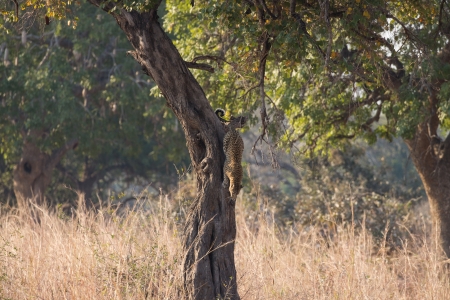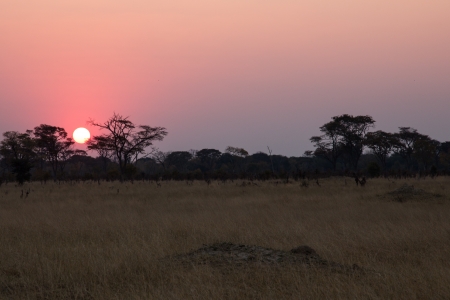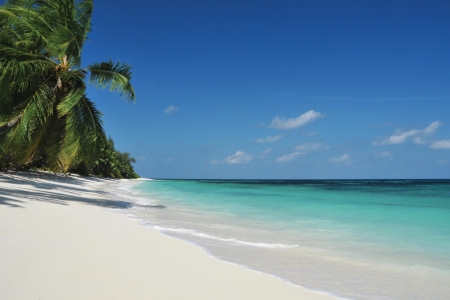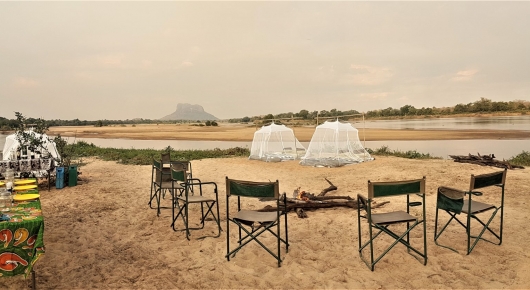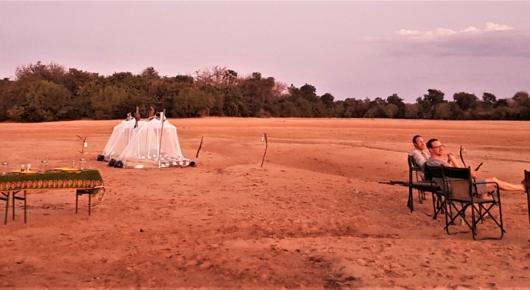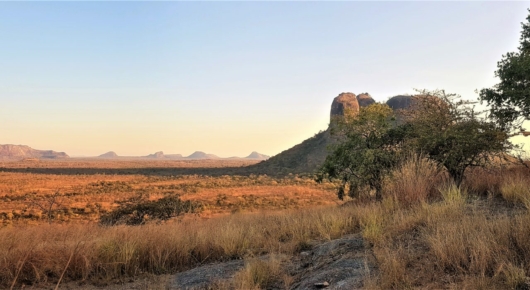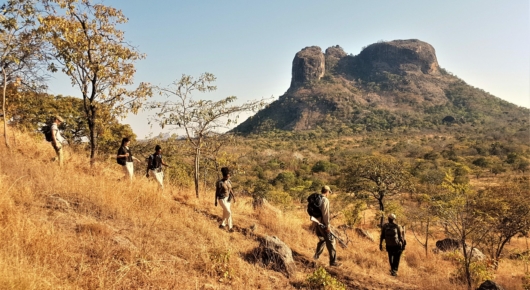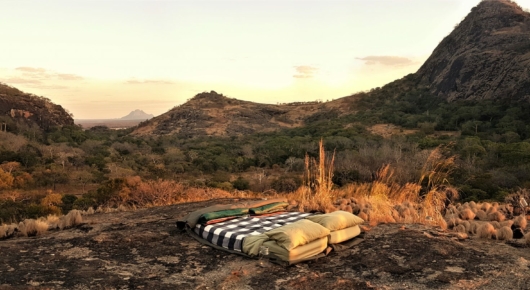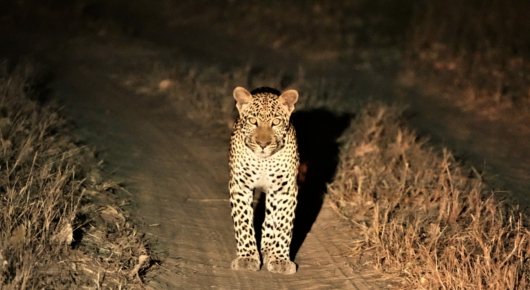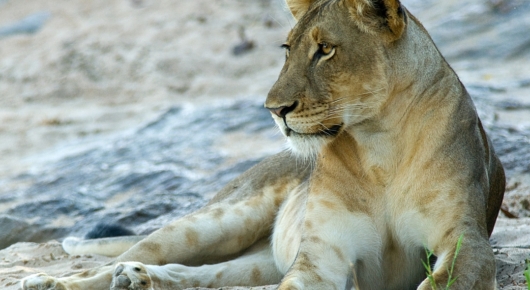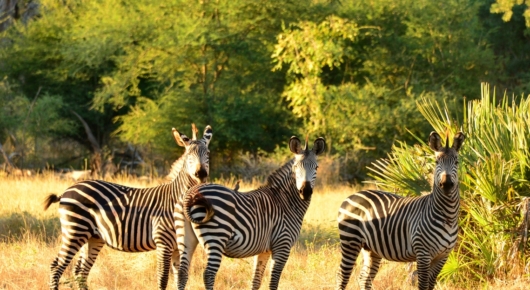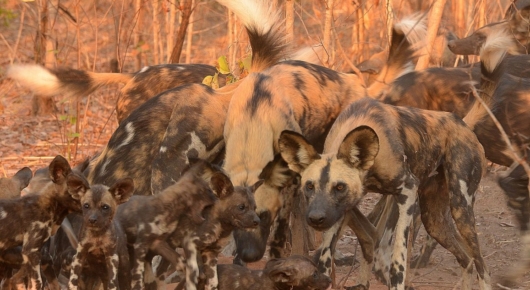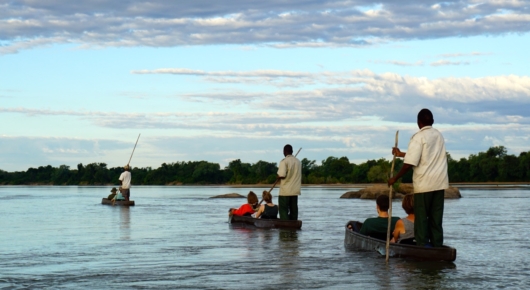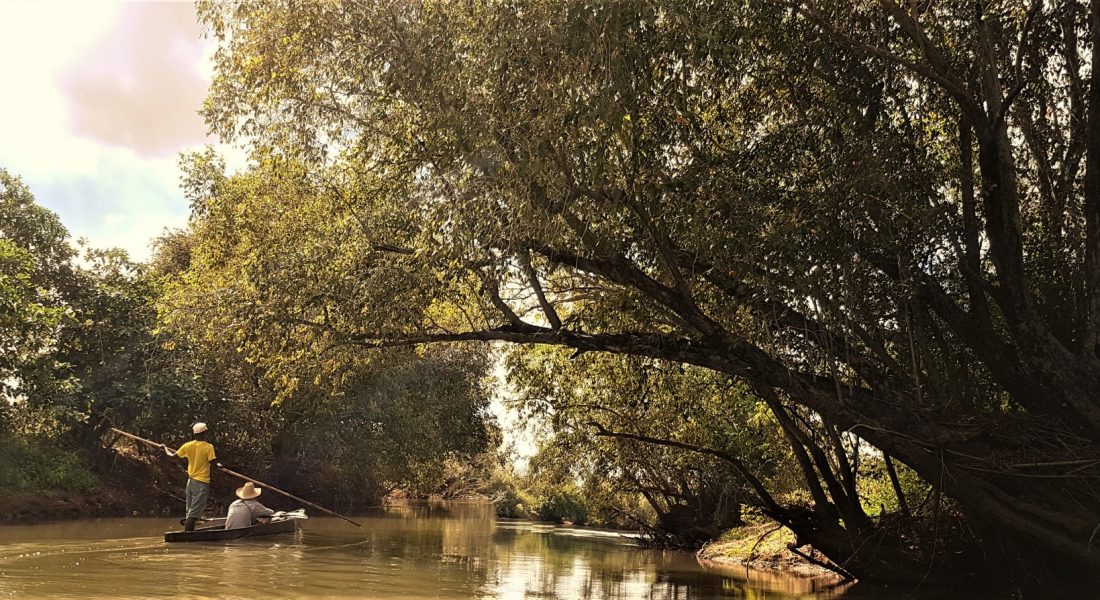
Niassa – a journey into wilderness
Niassa Expedition 2019 – a week in the wilderness
Anderson Expeditions will be presenting a fantastic expedition offering in Northern Mozambique from June of 2020. Here is Fraser Gear’s trip report from his recent visit – on our inaugural expedition with intrepid clients in July 2019 – and a few images to whet the appetite…
“I first explored Niassa Reserve in Northern Mozambique almost twenty years ago. It was huge, challenging and remote. We would spend days trying to get anywhere on seldom used tracks. The vehicles took a hammering and trying to arrange logistical support for our walking and canoeing explorations was nearly impossible. Game was shy, localized and not easy to find. There was no-one else around….. I was in love – this was the wildness that I craved, the sheer scale and beauty of the place was so moving. Gigantic mountains, magnificent rivers, enormous tusked elephant bulls and towering Sterculia trees had made their mark on me forever.
Fast forward to 2019 and a lot of those early challenges have been solved by an inspirational conservation model being developed in the concession known as L5 South. The Niassa Carnivore Project has been protecting this concession in partnership with the Mbamba community and the results are really starting to show.
Wildlife is excellent, poaching almost non-existent, drivable tracks have been opened offering access to the regions highlights and alternative livelihoods and work opportunities developed for the residents of the concession.
A conservation tourism model is being developed that ensures tourism revenues are ploughed back into conservation and community. As part of this initiative I spent a month in Niassa working with the team to develop the tourism offering as well as operating safaris for two different groups of “conservation tourists”.
Exploring Niassa is mostly about walking. It is sensational. We followed ancient elephant trails deep into the heart of the wilderness. Crossing woodlands and sandy riverbeds we encountered gangs of old buffalo bulls and family herds of elephant. Shy eland fled on dainty hooves and large herds of impala watched us with curiosity. We surprised bushpig at hidden water pools and spotted kudu frozen and watching in the thickets. Granite mountains are everywhere. Careful scanning often produced pairs of delicate klipspringer and huddles of hyrax sunbathing in the morning light. We climbed different mountains and rocks daily. The views from the top were epic and we would often spot herds of Crawshay’s zebra, warthog, buffalo and elephant from our elevated vantage point.
Birding on the trail was wonderful. Dense riverine thickets along seasonal streams produced lively mixed-species flocks. Amongst a colorful variety of common species, we had intimate views of Black-throated Wattle-eye, Böhms Bee-eater, Livingstone’s Flycatcher, Green-capped Eremomela and African Barred Owlet. Bateleur and Martial eagles soared overhead and on one walk we flushed a Bat Hawk from its day roost.
We would use game drive vehicles to travel further afield, search for predators and spotlight after dark. Without any doubt the highlight of our predator viewing was a pack of twenty African Wild Dog that hunted the floodplains along the Lugenda River every morning and evening. We spent amazing times with them as they searched for a den site for the very heavily pregnant alpha female, hunted impala, chased off curious spotted hyena and played in shady glades. Just before I left Niassa, they chose a den five minutes from our base camp and are now busy raising nine pups!
Spotlighting for nocturnal creatures was very productive. Four species of genet are possible! African Civet was seen nightly and white-tailed mongoose on most nights. Porcupine, greater galago and spotted hyena were regularly encountered. On the first night we had an incredible view of a young male leopard. We approached very cautiously and slowly thinking that he would be very shy. To our amazement he kept coming closer to us! Then there were two leopards! Two young brothers that put on a great show and seemed not to be nervous of our presence at all. Thinking that we had probably used up all our leopard luck we were thrilled to witness a small female leopard kill an impala right in front of our vehicle a few nights later with the same guests! The same female then showed herself to our next group at eleven in the morning as she scent-marked and climbed boulders quite close to the vehicle!
The Niassa Carnivore Project has some lions radio collared for research and conservation purposes in the concession area. We were fortunate enough to meet up with the lion team tracking some collared lions in the concession. The lion team heads out daily to climb inselbergs with the radio tracking equipment to keep tabs on lion movements. After a few close misses we managed to get an amazing view of a pride of lionesses and their large cubs where they rested in a big dry riverbed.
Our base during this time was the lovely Mpopo Camp. The camp is on an island in the Lugenda River overlooking a hippo pool. The shady retreat is constructed completely from locally sourced materials and is “refurbished” annually by the Mbamba community as part of the sustainability program. A small team from the village took care of us and produced simple but delicious food, cold drinks and comfortable beds. Nothing more needed. We did not spend every night in the comfort of Mpopo however, adventure fly camping is a highlight of the Niassa experience. Sleeping on a bedroll under a starry sky on top of an inselberg must rate as one of the top wilderness experiences possible. We also fly camped along the Lugenda on our river expedition.
The Lugenda and its braided channels, hidden islands, vast sandy beaches and deep riverine forests is one of Africa’s most beautiful rivers. Travelling as people always have here, in dugout canoes, down the river through the wildest country was adventure at it’s finest. At night we would choose a camp site and erect a simple mosquito net to cover our bedrolls, make a fire and settle in as hippo honked and splashed around us, lions roared and Pel’s fishing Owl’s deep resonate hooting filled the night.
On one island exploration we managed to find the day roost of the Pel’s and enjoyed an amazing sighting of this rarely seen denizen of Africa’s tropical rivers. The same walk produced bushpig, bushbuck and a big elephant bull shaking palm trees for fruit. Travelling downstream in the dugouts we passed kingfishers, herons and lapwings. African Skimmer flew alongside in buoyant flight and vervet and samango monkey watched us from the treetops. A few large nile crocodile were seen and pods of hippo noisily announced our passing.
I was completely blown away – this was the Niassa of my dreams. Visiting the Mariri environmental center gave insight into how the conservation model is protecting this precious piece of wild Africa. We were shown around the operations centre from where law enforcement is coordinated, met passionate team members who explained their roles ranging from introducing bee keeping and growing organic veggies to opening tracks in remote areas, monitoring carnivores and challenging illegal mining. We met the craft group making animal curios out of discarded flip flops and embroidering pillowcases with unique local designs – curios now on sale in the US! A visit to Mbamba village gave us insight into the challenges people face living with wildlife in remote areas and how these are being overcome with simple workable solutions that benefit the community, the wildlife and ultimately the conservation of one of Africa’s wildest regions.”
Below are some photographs from this latest Niassa expedition – please click on the individual images for the full image.
